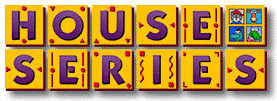Educational games are games explicitly designed with educational purposes, or which have incidental or secondary educational value. All types of games may be used in an educational environment, however educational games are games that are designed to help people learn about certain subjects, expand concepts, reinforce development, understand a historical event or culture, or assist them in learning a skill as they play. Game types include board, card, and video games.

Open educational resources (OER) are teaching, learning, and research materials intentionally created and licensed to be free for the end user to own, share, and in most cases, modify. The term "OER" describes publicly accessible materials and resources for any user to use, re-mix, improve, and redistribute under some licenses. These are designed to reduce accessibility barriers by implementing best practices in teaching and to be adapted for local unique contexts.

WETA-TV is the primary PBS member television station in Washington, D.C. Owned by the Greater Washington Educational Telecommunications Association, it is a sister station to NPR member WETA. The two outlets share studios in nearby Arlington, Virginia; WETA-TV's transmitter is located in the Tenleytown neighborhood in Northwest Washington.
Educational technology is the combined use of computer hardware, software, and educational theory and practice to facilitate learning. When referred to with its abbreviation, "EdTech", it often refers to the industry of companies that create educational technology. In EdTech Inc.: Selling, Automating and Globalizing Higher Education in the Digital Age, Tanner Mirrlees and Shahid Alvi (2019) argue "EdTech is no exception to industry ownership and market rules" and "define the EdTech industries as all the privately owned companies currently involved in the financing, production and distribution of commercial hardware, software, cultural goods, services and platforms for the educational market with the goal of turning a profit. Many of these companies are US-based and rapidly expanding into educational markets across North America, and increasingly growing all over the world."
An edublog is a blog created for educational purposes. Edublogs archive and support teacher learning by facilitating reflection, questioning by self and others, collaboration and by providing contexts for engaging in higher-order thinking. Edublogs proliferated when blogging architecture became more simplified and teachers perceived the instructional potential of blogs as an online resource. The use of blogs has become popular in education institutions including public schools and colleges. Blogs can be useful tools for sharing information and tips among co-workers, providing information for students, or keeping in contact with parents. Common examples include blogs written by or for teachers, blogs maintained for the purpose of classroom instruction, or blogs written about educational policy. Educators who blog are sometimes called edubloggers.

Cable in the Classroom was an American division of the National Cable & Telecommunications Association that assisted the cable television industry in providing educational content to schools. The organization was founded in 1989. A Canadian organization, also called "Cable in the Classroom", was founded in 1995, and held the same scope as the US organization.
Lego Education, formerly known as Lego Dacta, is a specialized Lego theme created for educational purposes in schools. This theme, introduced in 1999, includes a variety of sets that cater to different educational needs.[2] These sets often focus on Duplo and Technic themes and typically contain a larger quantity of blocks. By incorporating these sets into the classroom, educators can provide students with hands-on learning experiences that enhance their understanding of various subjects, from basic building concepts to advanced engineering principles.[1]
Augmented learning is an on-demand learning technique where the environment adapts to the learner. By providing remediation on-demand, learners can gain greater understanding of a topic while stimulating discovery and learning. Technologies incorporating rich media and interaction have demonstrated the educational potential that scholars, teachers and students are embracing. Instead of focusing on memorization, the learner experiences an adaptive learning experience based upon the current context. The augmented content can be dynamically tailored to the learner's natural environment by displaying text, images, video or even playing audio. This additional information is commonly shown in a pop-up window for computer-based environments.
Social learning tools are tools used for pedagogical and andragogical purposes that utilize social software and/or social media in order to facilitate learning through interactions between individuals and systems. The idea of setting up "social learning tools" is to make education more convenient and widespread. It also allows an interaction between users and/or the software which can bring a different aspect to learning. People can acquire knowledge by distance learning tools, for instance, Facebook, Twitter, Khan Academy and so on. Social learning tools may mediate in formal or informal learning environments to help create connections between learners, instructors and information. These connections form dynamic knowledge networks. Social learning tools are used in schools for teaching/learning and in businesses for training. Within a school environment, the use of social learning tools can affect not only the user (student) but his/her caretaker as well as his/her instructor. It brings a different approach to the traditional way of learning which affects the student and his/her support circle. Companies also use social learning tools. They used them to improve knowledge transfer within departments and across teams. Businesses use a variety of these tools to create a social learning environment. They are also used in company settings to help improve team work, problem solving, and performance in stressful situations.
Khan Academy is an American non-profit educational organization created in 2006 by Sal Khan. Its goal is to create a set of online tools that help educate students. The organization produces short video lessons. Its website also includes supplementary practice exercises and materials for educators. It has produced over 10,000 video lessons teaching a wide spectrum of academic subjects, including mathematics, sciences, literature, history, and computer science. All resources are available for free to users of the website and application.

Salman "Sal" Amin Khan is an American educator and the founder of Khan Academy, a free online non-profit educational platform with which he has produced over 6,500 video lessons teaching a wide spectrum of academic subjects, originally focusing on mathematics and science. He is also the founder of Khan Lab School, a private in-person school in Mountain View, California.

The Joan Ganz Cooney Center is an independent, non-profit, non-partisan research and innovation group founded by Sesame Workshop to advance children's literacy skills and foster innovation in children's learning through digital media.

Common Sense Media (CSM) is an American nonprofit organization that reviews and provides ratings for media and technology with the goal of providing information on their suitability for children. It also funds research on the role of media in the lives of children and advocates publicly for child-friendly policies and laws regarding media and education.

Edmodo was an educational technology platform for K–12 schools and teachers. Launched in 2008, it enabled teachers to share content, distribute quizzes and assignments, and manage communication with students, colleagues, and parents. The service was shut down on September 22, 2022.
Instructure Holdings, Inc. is an educational technology company based in Salt Lake City, Utah, United States. It is the developer and publisher of Canvas, a web-based learning management system (LMS), and Mastery Connect, an assessment management system.

ABCmouse.com Early Learning Academy is a digital education program for children ages 2–8, created by the edtech company Age of Learning, Inc. The program offers educational games, videos, puzzles, printables, and a library of regular and “read-aloud” children’s books, covering subjects including reading and language arts, math, science, health, social studies, music, and art.

Teaching Channel is a multi-platform service founded in 2010 delivering professional development videos for teachers over the Internet. In addition to showcasing inspiring teachers in videos, Teaching Channel also hosts a community for educators to share ideas, best practices and enhance their knowledge. Started as a nonprofit organization, the company was converted to a for-profit in 2017.

The gamification of learning is an educational approach that seeks to motivate students by using video game design and game elements in learning environments. The goal is to maximize enjoyment and engagement by capturing the interest of learners and inspiring them to continue learning. Gamification, broadly defined, is the process of defining the elements which comprise games, make those games fun, and motivate players to continue playing, then using those same elements in a non-game context to influence behavior. In other words, gamification is the introduction of game elements into a traditionally non-game situation.
Social media in education is the use of social media to enhance education. Social media are "a group of Internet-based applications...that allow the creation and exchange of user-generated content". It is also known as the read/write web. As time went on and technology evolved, social media has been an integral part of people's lives, including students, scholars, and teachers. However, social media are controversial because, in addition to providing new means of connection, critics claim that they damage self-esteem, shortens attention spans, and increase mental health issues.

Early Learning House or simply the House Series is a collection of four main educational video games and two compilations for the Windows and Macintosh platforms, developed by Theatrix Interactive, Inc. and published by Edmark software. Each different game focuses on a particular major learning category with selectable skill settings for preschooler, kindergarten and elementary learners. Millie's Math House (1992) on mathematics, Bailey's Book House (1993) on language, Sammy's Science House (1994) on science, and Trudy's Time and Place House (1995) on history and geography. A spin-off, Stanley's Sticker Stories (1996), sees players create animated storybooks with the series' characters. Millie & Bailey Preschool and Millie & Bailey Kindergarten each contain the combined activities from two of the four software products. In addition the programs can be configured by an adult mode to suit students with special needs. Most of the activities in every game have two modes, one to allow learners to explore and try it out for themselves and the other for learners to follow specific tasks set by the game characters. Learners also have the option to print pictures of creative activities and record sounds in phonics activities. Later the games were re-developed by Houghton Mifflin Harcourt Learning Technology and re-published by The Learning Company with newer graphics and additional activities.












